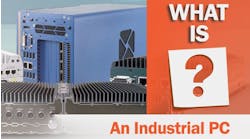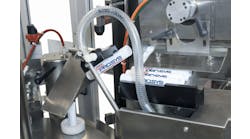Latest from Learning Center
Top 5 Barriers to IIoT Adoptions and How to Overcome Them
New business models like 'power by the hour,' predictive maintenance, interacting directly with customers, and optimizing efficiency—the benefits of the Industrial Internet are great. But for the companies willing to take the plunge and launch Industrial Internet projects, mistakes are all too common. Here are five of the most common stumbling blocks:
1. Too Much Attention on the Technology Stack or Informational Technology (IT)
Most vendors fit somewhere in the technology stack from things, connectivity, platforms, applications, and analytics. For the mid-tier industrial world, it's hard to decipher the big picture of how and where to start. Thus, the IoT industry is heavily focused on what appears to be gadgets and not making them relevant to the particular business verticals themselves, appearing expensive and intimidating.
While one must understand the pieces and costs, focus on the desired outcome and peel back the onion one layer at a time. As a manager or executive, you want to use data and information to influence human behavior (a maintenance technician preempting a costly pump failure through the use of data alerts and trending analysis).
2. Conservative Technology Culture or Too Much Focus on Operational Technology (OT)
A second major barrier has to do with the expertise and culture of industrial organizations, which is a focus on operations, or Operational Technology (OT). Industrial organizations as Operational Technology companies are at direct odds philosophically with Informational Technology (IT) organizations. Whereas IT is defined by constant change and innovation, OT is change and risk-averse. That’s why it’s not unusual to see industrial automation systems in service for decades at a time with little or no change. In a world where any downtime of production systems can have a devastating impact on revenue stability is the top priority.
The real value will be the fine balance of domain expertise (OT) with data science (IT) to yield positive outcomes for the organization. While stability and the way things were done in the past served well as "experience", organizations must adapt to this digital industrial revolution dubbed Industry 4.0. We are all too familiar with stories of Kodak being a market leader until digital disruption eclipsed the instant photograph with digital photos. Some referred to those who don't innovate during these rapidly changing times as being "Kodak-ed".
One has to jump in and commit to a series of small experiments to learn from these organizational changes. You can mitigate risk by having reasonable expectations in small, coordinated "digital test beds" to determine the value and ROI.
3. Lack of Industrial Technologists to Lead the IIoT Program
While one can commit in theory to the idea the digital world is merging quickly with the industrial world and the desire to start on an initiative, there is the question of who in the company can lead that charge. There needs to be a person or team that can bridge the gap between the IT and OT cultures and competing priorities are met. The program needs a combined IT/OT perspective for the organization, all within the confines of achieving IIoT goals with increasing operational complexity or burdens that is already short-staffed.
There are several certifications in data science, online courses, and conferences nationwide to begin educating middle management on these concepts. While new, start building competency but making learning and education a KPI of the management team. Look to team with universities and vendors that can help assist with this function and educational need.
The thirst and quest for knowledge must be an ongoing mandate of the executive team. Learning will be considered a lifelong process, where dynamic stability and constant motion are required to stay relevant.
4. What's the ROI?
Industrial technology investments are highly ROI-driven. IIoT should be seen as a process improvement over time that yields significant savings and efficiency, not as a typical 12-month payback cycle type of investment.
Data should be considered an asset not only for SCADA or monitoring but as condition monitoring that leads to predictive/preventative maintenance. Sensors that monitor vibration, temperature, and humidity can provide a wealth of new insights into rotating machines and pumps. Measuring and seeing trends from various sensors can help predict failures before they occur, minimizing unplanned and costly downtime. This also improves maintenance schedules as, over time, this is tried-and-true in your factory setting, beyond calendar or user manual guides as leading indicators of planned downtime.
ROI must be looked at holistically with the bottom line organization-wide and from a cost savings and efficiency improvement together.
5. Security Concerns
With all the news regarding cyber security, it's easy to worry about the potential hacks and problems that occur. One has to systemically specifically address these security issues one by one and realize there are safeguards to protect sensitive industrial information. Data can be verified and encrypted with a myriad of communications depending on the level of sensitivity.
SCADA systems do not need to integrate sensor data and action it, they can be separated digitally. In addition, the cloud infrastructure could be networked internally as a "private" or corporate cloud with no access to the outside world. These security barriers can be overcome by realizing the IIoT benefits outweigh the risks.
How to Begin: Think Big or Small?
A straightforward and practical approach should be used when embarking on an IoT project. This should not be viewed as a massive, company-changing effort, but rather a series of small projects or digital test beds that have the potential to increase revenue, improve the bottom line, or boost customer retention.
While we all recognize the opportunity for success, realize that not all IoT initiatives will succeed, some say that about half will fail. If you have that in mind (failure on some trials or projects will happen) then company expectations about success are reasonable.
Top 5 Barriers to IIoT Adoptions and How to Overcome Them was originally published on IndustryWeek, an Endeavor Business Media partner site.










